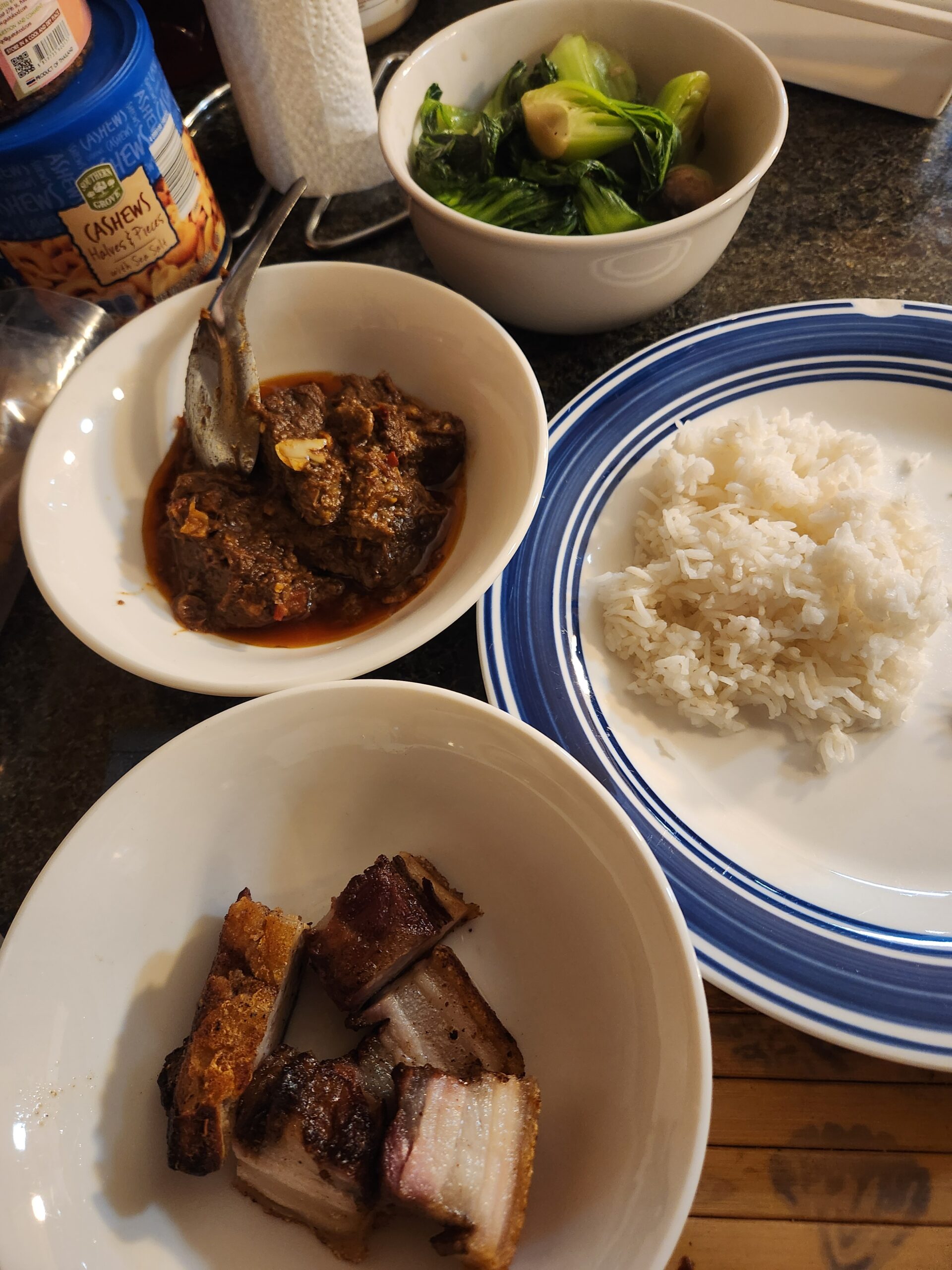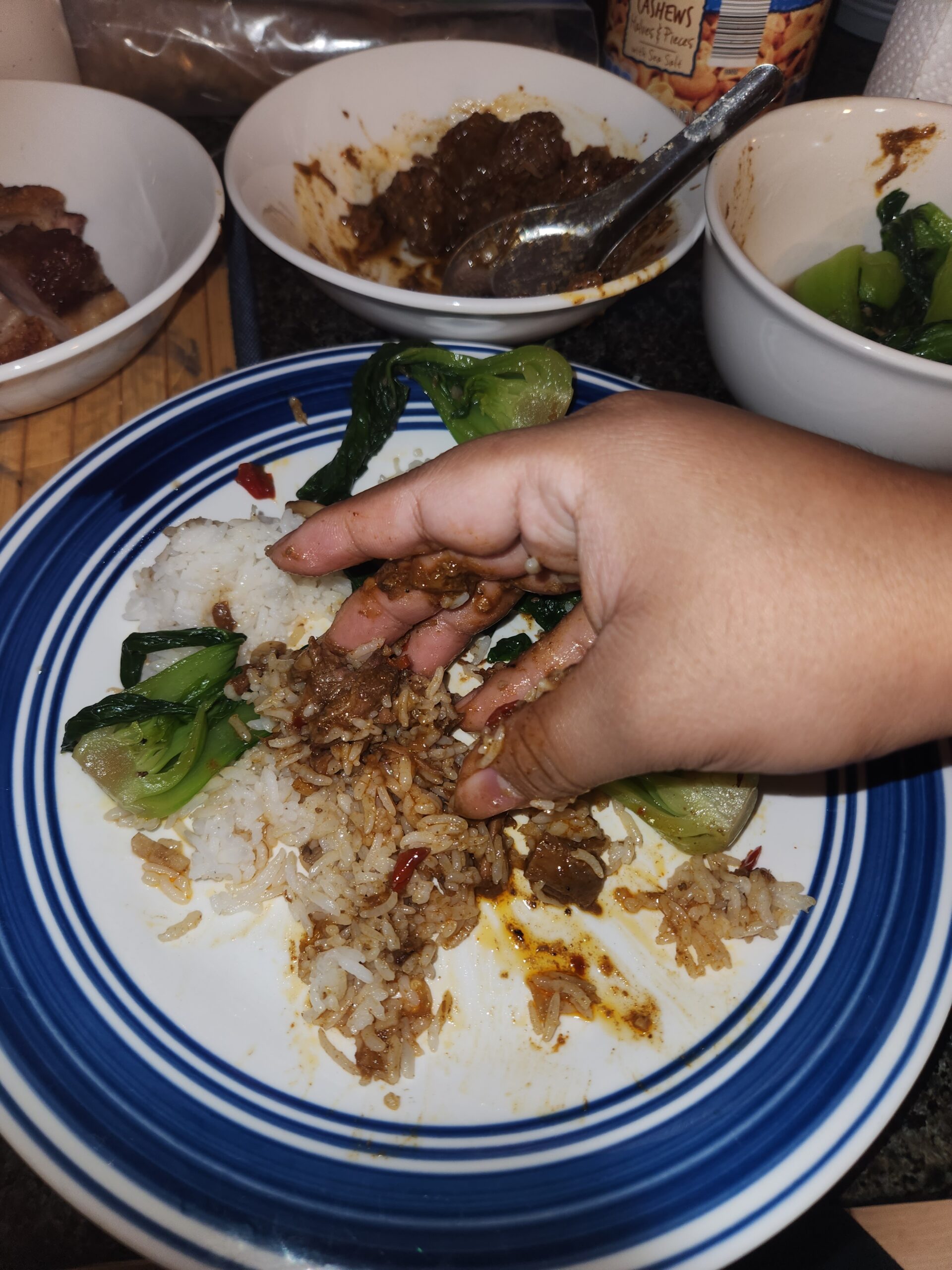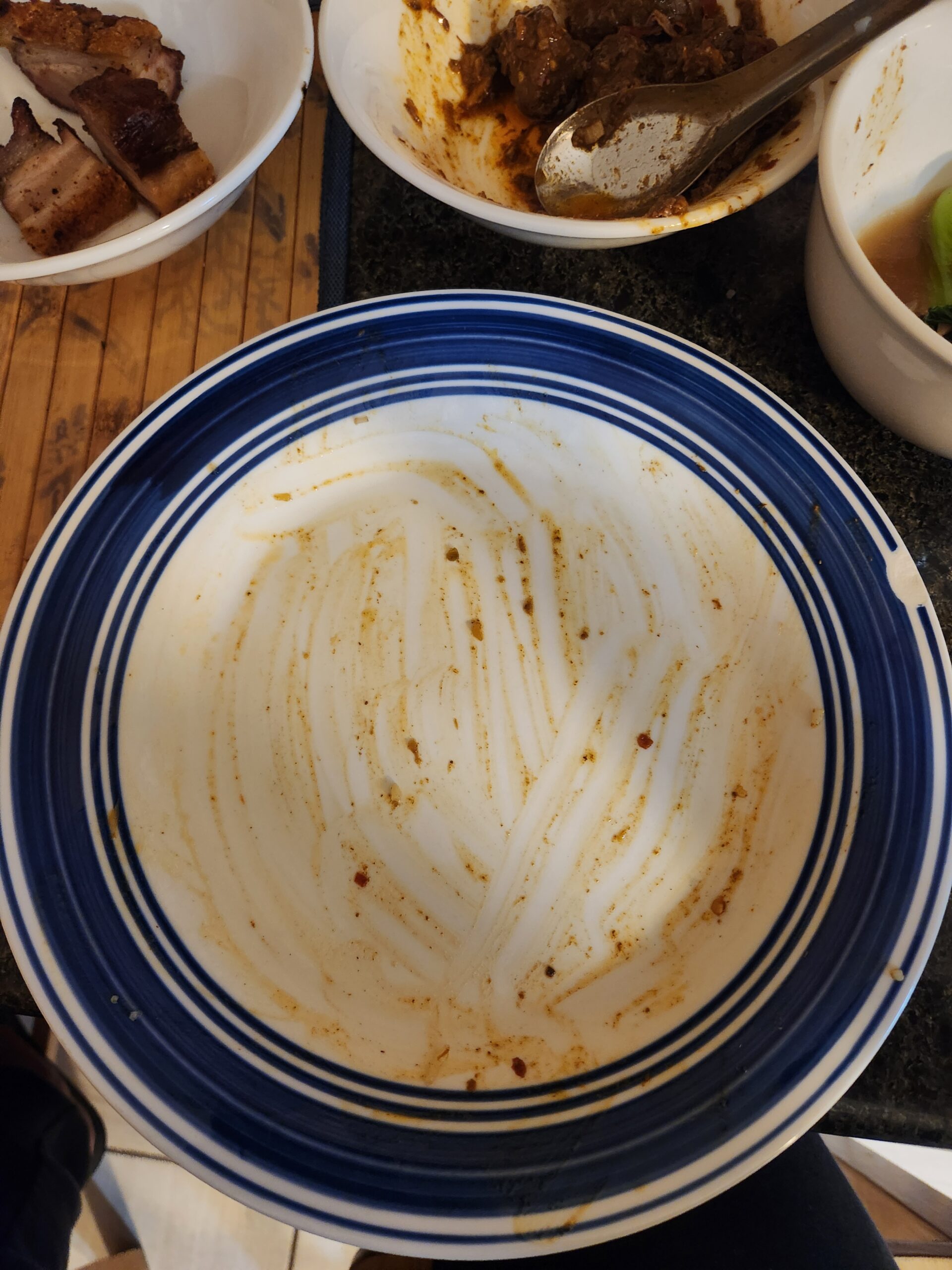
A Handful of Love
As the sun set over the golden land, many families in Myanmar, including mine, relinquished our conversations and resigned from whatever we were doing at hand. Then guided by our growling stomachs, we marched forward, with great anticipation, toward the shores of the kitchen. Soon, thanks to our mothers and housekeepers, a warm sea of curried dishes and colorful plates washed over the dining table. Sweet and savory scents filled the air and pulled us in closer and closer, like the Sirens’ melodies, until we plunged down in the currents. Waves of fresh, hot steam from the food rolled over our faces, leaving our mouths salivating and our stomachs growling like whale noises evermore.
Our plates sat in front of us with fresh scoops of basmati rice, but nothing can be consumed until the next ritual ‘u cha’ is completed. According to the custom, the young people would scoop and serve every dish on the table to the elders’ plates first before our own. I, thanks to my great youth, would not be participating until the upcoming year, or at least when I can finally hold a spoon. Naturally, the throne was passed onto my brother whose duty beckoned him. He scooped little bits of the curries and stir-fries and soup onto the adults’ plates. Then, only after last drop of ‘u cha’ was performed, then did the hunting commence.
Like an expert fisherman, my grandmother expertly looked across the horizon of infinite dishes. From the corner of her keen eyes, she saw a thick, juicy chunk of pork, submerged yet glistening in the middle of the sea. Using a stainless steel spoon like a trident, she dove in quickly to capture the biggest piece of pork yet, the size of which only matched her love for me. She plunged her kill and its accompanying gravy down on my white seabed of rice. With her bony fingertips, fragile but ladened with decades of experience, she mixed the pork, gravy, and rice all together until the morsel of perfect texture and taste was achieved. Then using her fingertips from her right hand alone, she cusped a small amount of the now-perfect rice into a ball and plopped it inside the mouth of her four-year-old granddaughter, who, in anticipation, had been leaving her mouth open and salivating for some quite time now.
Beamed with happiness, I smiled at my grandmother who, I will always remember, made the best and perfect morsels of rice and curry.
Only one hand, one of dominant nature, takes direct contact with the curry and rice, while the other one, which remains clean and dry, controls the air and scoops out the dishes from their perspective plates. Our dominant hand, which of course is only utilized after being washed, come in to play and dress the part of our companion, our family, and our lover. Like our companion, our hand ensures we are entertained and having fun through different blends of spices and textures dancing on our tongue. Like our family, it guides and accompanies the food to the mouth with great love and care, and fills our empty stomach during our lowest points. Like our lover, our hand ensures our tastebuds are always parading in excitement as firework of flavors explode in our mouths. Such are the pivotal roles of our hands indeed.
Only one hand, one of dominant nature, takes direct contact with the curry and rice, while the other one, which remains clean and dry, controls the air and scoops out the dishes from their perspective plates. Our dominant hand, which of course is only utilized after being washed, come in to play and dress the part of our companion, our family, and our lover. Like our companion, our hand ensures we are entertained and having fun through different blends of spices and textures dancing on our tongue. Like our family, it guides and accompanies the food to the mouth with great love and care, and fills our empty stomach during our lowest points. Like our lover, our hand ensures our tastebuds are always parading in excitement as firework of flavors explode in our mouths. Such are the pivotal roles of our hands indeed.
The ability to play with the food with our hand allows us to understand the history and the story of the food that’s been passed down for generations. It makes us inspect each piece and each bone of different types of curry that range from softness to hardness, from wetness to dryness, and from cold to warmth. Through the handling of the textures by our hands, we get to see how the curry was composed and created from the initial selection of each ingredient at the supermarket to their eventual collaboration on a cooking pan as they parade around with different sauces and spices unique to their taste. The tips of the fingers work in harmony, like the concertmaster, to create a symphony of music that satisfies our inner child and happiness.
Back to our dinner table, at the end of each battle between our fingers and the curries, the sea calms down. After a tremendous battle at the ocean, we put the dishes away and cleanse our hands. Then we wash down our throats with Burmese tea and reassumes our lives. The time I remembered my grandmother feeding me was one of my most joyous memories of my childhood. Indeed not only did the act of eating with hands brought joy, but it was also a way for me to understand and experience the food better and to create these special memories with my family. Food wasn’t just for eating, but for forging bond with each other – one hand at a time.
Afterward
2023.12.6
I bought the spicy beef curry dish from a local Burmese restaurant here in Albany, New York.
The fried pork “cha su” was purchased from Asian supermarket in Albany as well.
I cooked the stir fry bok choy by myself.

I feel Myanmar’s eating with hand culture is on the decline. As for me, I live in New York but still eat by hand.



Profile

Hythi Ei
Born and raised in Yangon, Myanmar, Haythi Ei immigrated to New York City at the age of nine. Growing up, she knew she wanted to give back to her community and help her people. Whether in education, healthcare or research, she has worked in Thailand, Myanmar and the United States to serve marginalized communities of Burmese refugees and minorities. After graduating from Binghamton University with B.S. in Integrative Neuroscience, she went onto receive her Master in Public Health. With her wealth of experience of working in community health in upstate New York and international sector, she is now working as an assistant health program administrator for the New York State.





Leave a
Comment